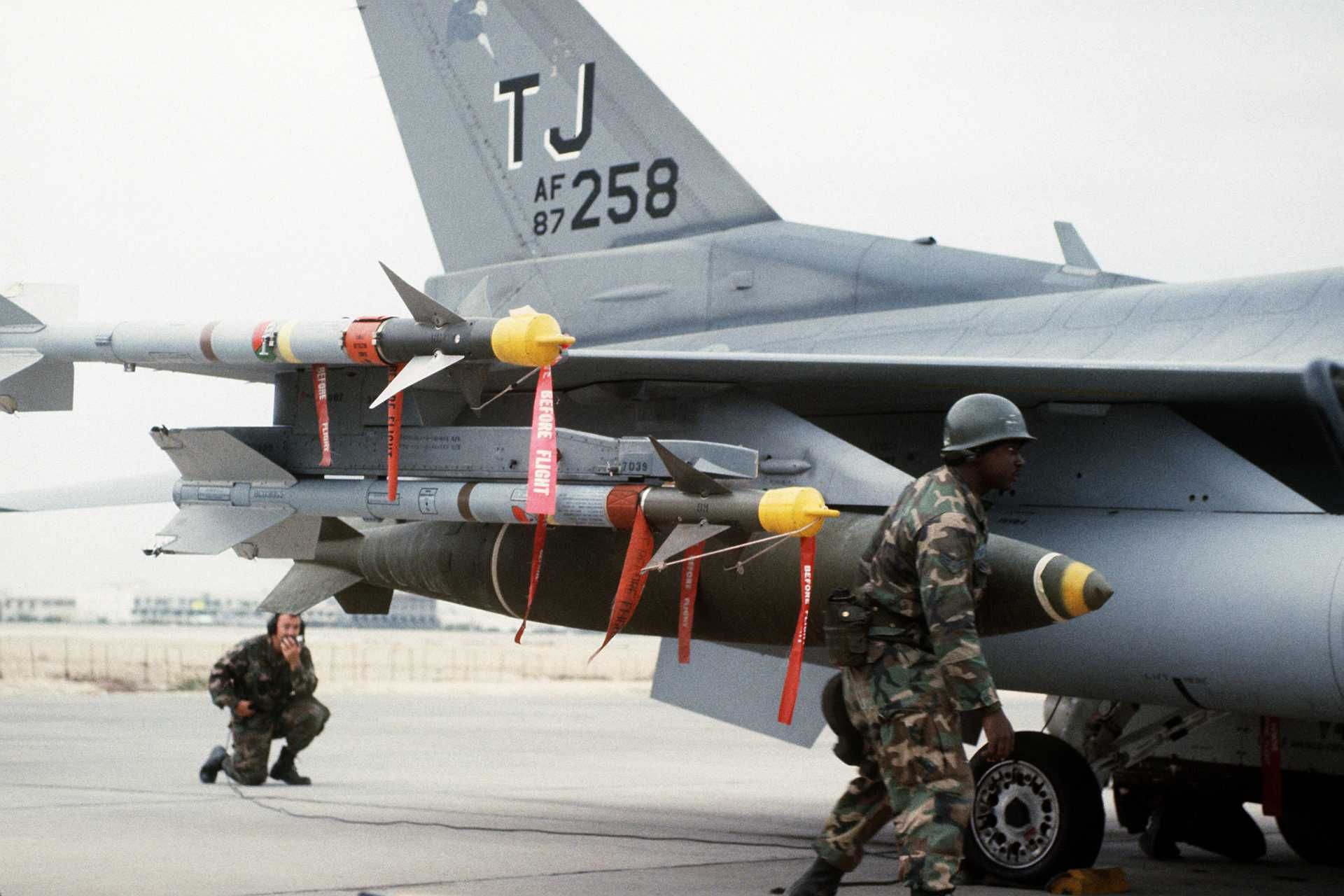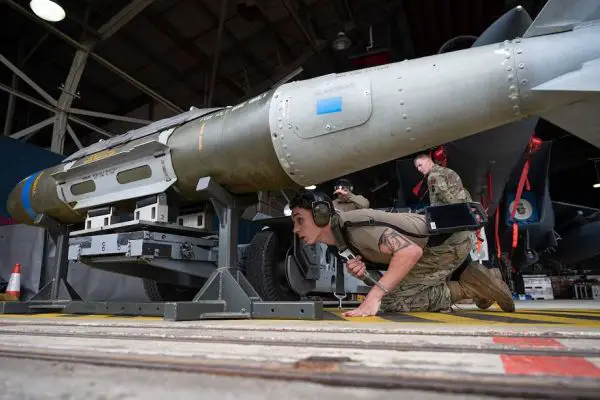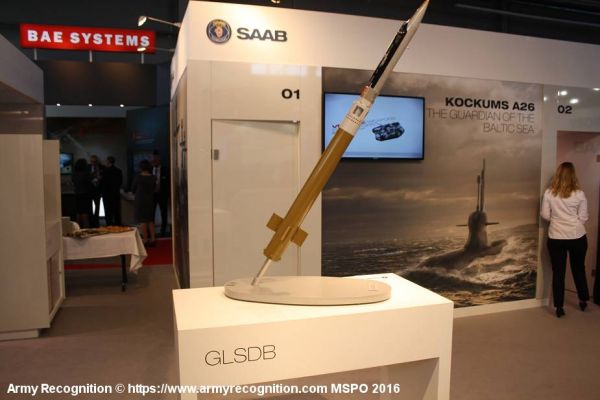Bombs.
Mk-84 bomb.

The American Mk-84 is a High-Explosive (HE), Low-Drag General-Purpose (LDGP) aircraft bomb, part of the U.S. military's Mk-80 series of bombs. It is the largest and heaviest of this series, with a nominal weight of 2,000 lbs (907.2 kg).
Country users: United States, Australia, Belgium, Canada, Denmark, Egypt, Greece, Italy, Japan, Kuwait, Netherlands, Norway, Saudi Arabia, Singapore, South Korea, Spain, Turkey, United Kingdom
Description
The Mk-84 is an American-made High-Explosive (HE), Low-Drag General-Purpose (LDGP) aircraft bomb, part of the U.S. military's Mk-80 series of bombs. It is the largest and heaviest of this series, with a nominal weight of 2,000 lbs (907.2 kg). The bomb is designed for a variety of combat scenarios, offering substantial explosive power to destroy enemy infrastructure, bunkers, and other fortified targets. Though it was initially developed during the 1950s and 1960s as a conventional bomb for free-fall use, the Mk-84 has been adapted over the decades to serve in multiple roles, both as a conventional and precision-guided weapon.
Entering service in the early 1960s, the Mk-84 has been a staple in the U.S. military's arsenal and continues to serve with modern air forces. The bomb's large payload and robust construction make it effective in penetrating hardened targets such as bunkers, airstrips, and bridges, while its fragmentation capabilities cause widespread damage to enemy personnel and equipment. As the largest variant in the Mk-80 series, the Mk-84 can penetrate up to 15 inches (381 mm) of metal or 11 feet (3.4 meters) of reinforced concrete, depending on its release altitude and conditions. Its lethal fragmentation radius extends up to 400 yards (365.8 meters), ensuring maximum impact on enemy forces.
Many Mk-84 bombs have been retrofitted with stabilizing fins and a Tail-Retarding Device (TRD) to provide precision-guided capabilities, allowing them to deliver pinpoint accuracy in modern combat scenarios. These modifications enable the Mk-84 to serve as the warhead for several Guided Bomb Units (GBUs), including the GBU-10 and GBU-24 Paveway laser-guided bombs (LGBs), the GBU-27 Paveway LGB, the GBU-15 Electro-Optical (EO) bomb, the GBU-31 Joint Direct Attack Munition (JDAM), and the Quick-Strike Mine (QSM). With these advancements, the Mk-84's versatility and precision have been significantly enhanced, allowing it to be used effectively in a variety of military operations.
The bomb is typically carried by a wide range of aircraft platforms, from fighter jets like the F-15E Strike Eagle and F/A-18 Hornet to bombers like the B-52 Stratofortress. It can be employed for various mission types, including close air support, interdiction, and strategic bombing. Whether unguided in its original form or as part of a guided system, the Mk-84 remains a highly effective weapon for both conventional and precision bombing campaigns.
Mk-84 bomb variants:
- Mk-84 GP Bomb (General-Purpose Bomb): The standard, unguided version with a high-explosive warhead.
- GBU-10 Paveway II: A laser-guided bomb (LGB) version using the Mk-84 as the warhead.
- GBU-24 Paveway III: An advanced laser-guided version of the Mk-84, with improved performance in adverse weather conditions.
- GBU-27 Paveway: A specialized laser-guided bomb designed to penetrate reinforced structures, utilizing the Mk-84 as its core.
- GBU-15 Electro-Optical (EO): A version of the Mk-84 with electro-optical guidance for high-precision targeting.
- GBU-31 Joint Direct Attack Munition (JDAM): A GPS/INS-guided bomb variant of the Mk-84, offering precision strikes in all weather conditions.
- Quick-Strike Mine (QSM): A variant that turns the Mk-84 into a sea mine for naval operations.
Technical Data
-
Design
The Mk-84 has a streamlined, low-drag aerodynamic body, which improves its performance in free-fall scenarios and reduces the impact of wind resistance. The bomb is approximately 3.84 meters (12 feet 6 inches) in length, with a body diameter of 457 mm (17.99 inches). When equipped with a fuze, its overall length increases to 2,600 mm (102.36 inches), whereas without a fuze, the length is 2,470 mm (97.24 inches). The bomb weighs approximately 2,000 lbs (907.2 kg) when fully loaded, but the weight can range from 1,972 lbs (894.5 kg) to 2,083 lbs (944.8 kg) depending on configuration. The Mk-84 features a forged steel casing, which provides durability and enhances its capability to penetrate and explode on target.
The bomb's fins are deployed during free-fall to stabilize the weapon's trajectory, allowing for more accurate drops. It has an array of suspension lugs that allow it to be carried and dropped from a variety of aircraft types, ensuring its compatibility with numerous platforms in the U.S. and allied inventories.
-
Warheads
The Mk-84 is equipped with a Tritonal explosive fill, which consists of 80% TNT and 20% aluminum powder. This composition maximizes the bomb's explosive yield and increases the efficiency of the blast. The Mk-84’s explosive payload weighs approximately 429 kg (945.8 lbs), and the bomb's main effects include high levels of fragmentation and blast damage. The fragmentation radius extends to a lethal distance of 400 yards (365.8 meters), which can cause devastating casualties and damage to enemy equipment and infrastructure.
In terms of penetration, the Mk-84 is capable of breaching up to 15 inches (381 mm) of metal or 11 feet (3.4 meters) of reinforced concrete, making it an effective weapon for destroying bunkers, bridges, and hardened military installations. The Mk-84 also comes with several fuze options, including nose and tail fuzes, which provide flexibility in terms of detonation timing. The fuzes can be set for impact, proximity, or delayed detonation, depending on the mission requirements.
-
Guidance Systems
While the Mk-84 is traditionally an unguided bomb, it has been widely adapted for use with precision-guided systems. Many Mk-84 bombs are now retrofitted with Tail-Retarding Devices (TRDs) and guidance kits, enabling them to achieve high levels of accuracy. Some of the key guided variants include:
- GBU-10 Paveway II: A laser-guided bomb (LGB) that uses a laser seeker to home in on laser-designated targets.
- GBU-24 Paveway III: A more advanced laser-guided variant that provides better performance in adverse weather conditions.
- GBU-27 Paveway: A specialized laser-guided bomb designed to penetrate reinforced structures.
- GBU-15 Electro-Optical (EO): A variant that uses electro-optical guidance for high-precision targeting.
- GBU-31 Joint Direct Attack Munition (JDAM): A GPS/INS-guided bomb that ensures accuracy despite poor visibility or adverse weather conditions.
These precision-guided versions of the Mk-84 greatly enhance its operational flexibility, allowing it to be used for everything from strategic strikes to tactical missions in complex environments. -
Launcher and Combat Use
The Mk-84 bomb can be deployed from a wide range of U.S. and allied aircraft. It is typically carried by fighter aircraft such as the F-15E Strike Eagle, F-16 Fighting Falcon, and F/A-18 Hornet, as well as by bombers like the B-52 Stratofortress, B-1B Lancer, and B-2 Spirit. The Mk-84 is designed to be dropped from altitudes ranging from low to high, depending on the mission profile, with release speeds up to Mach 1.0.
The bomb can be used in a variety of operational roles, including close air support, interdiction, and strategic bombing. It is particularly effective against hardened targets such as bunkers, enemy command centers, and airfields, where its explosive power and fragmentation effects can cause significant destruction. The Mk-84 is also employed in mining operations, such as in the Quick-Strike Mine (QSM) configuration, where its versatility extends beyond traditional bombing missions.
Specifications
-
Type
High-Explosive (HE), Low-Drag General-Purpose (LDGP) Bomb
-
Country users
United States, Australia, Belgium, Canada, Denmark, Egypt, Greece, Italy, Japan, Kuwait, Netherlands, Norway, Saudi Arabia, Singapore, South Korea, Spain, Turkey, United Kingdom
-
Designer Country
United States
-
Launcher Aircraft
F-15E Strike Eagle, F-16 Fighting Falcon, F/A-18 Hornet, B-52 Stratofortress, B-1B Lancer, B-2 Spirit, Tornado IDS, and various other allied aircraft platforms.
-
Guidance Systems
- GBU-10 Paveway II (Laser-guided)
- GBU-24 Paveway III (Advanced Laser-guided)
- GBU-27 Paveway (Laser-guided, reinforced penetration)
- GBU-15 Electro-Optical (Electro-optical guidance)
- GBU-31 Joint Direct Attack Munition (JDAM) (GPS/INS-guided) -
Warheads
Tritonal explosive fill (80% TNT, 20% aluminum powder), with a payload of approximately 429 kg (945.8 lbs).
-
Penetration Capabilities
- Up to 381 mm of metal
- Up to 3.4 meters of reinforced concrete -
Accuracy
- Unguided: Accuracy is dependent on release altitude, aircraft speed, and environmental factors, typically within a large area of impact (hundreds of meters).
- Guided: Precision-guided versions like the GBU-31 (JDAM) and GBU-10 (Paveway) can achieve circular error probable (CEP) of less than 10 meters under optimal conditions. -
Launch Weight
Approx. 2,000 lbs (907.2 kg), with variations based on configuration (weight can range from 1,972 lbs/894.5 kg to 2,083 lbs/944.8 kg).
-
Dimensions
Length: 3.84 m; Diameter: 0.457 m; Wingspan: Approximately 0.61 m when fins are deployed during free-fall.











































